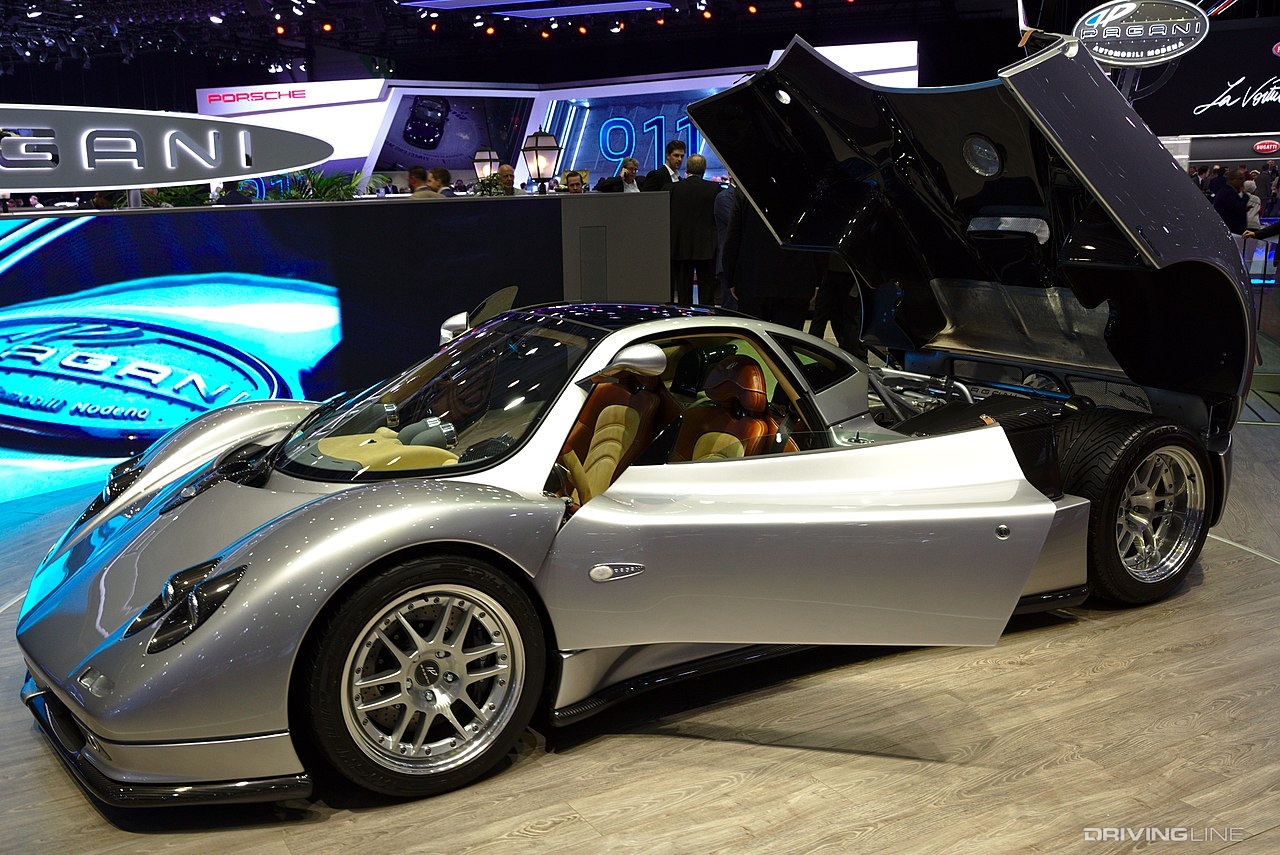Platform sharing is a common practice in the car industry. After all, when it can cost as much as a billion dollars to bring an all-new vehicle to market, it only makes sense to get as much out of that major capital investment as possible by spreading the technology far and wide throughout a company's lineup.
There's another form of parts sharing, however, which sometimes makes strange bedfellows of vehicles that seemingly have nothing to do with each other. We're talking about the weird world of parts bin brothers, with one vehicle serving as the organ donor to another in a back alley swap of lights, switches and sometimes even mechanical bits, all done under the cover of darkness with little or no corporate acknowledgement beyond a signed check and a promise never to tell.
Let's take a look at a few of our favorite automotive hand-me-downs.
1. The Lamborghini Diablo's Headlights
When you're a small company spending most of your development dollars on things like enormous V12 engines and bespoke all-wheel drive systems, the little details can sometimes slip through the cracks. Such was the case with the Lamborghini Diablo, which underwent a facelift at the end of the '90s that forced the supercar to give up its trusty pop-up headlights in favor of a more modern, crash-friendly setup.

Enter Nissan, which just happened to have a warehouse filled with 300ZX headlights gathering dust. Italian-Japanese synergy saw the Z32 lighting fit flush into the Diablo's front fenders, giving it a renewed lease on life that carried it through the final few years.
2. The Lotus Esprit's Taillights
Speaking of small companies without a lot of resources, Lotus was in a similar dilemma when it came to sourcing taillights for the redesign of its Esprit sports car in the late 1980s. In bed deep with Toyota already on the engine tuning side of things (having lent its expertise to the Japanese giant), the Esprit benefited from lamps originally outfitted to the drift hero AE86 Corolla.

A persistent rumor exists that Toyota actually paid for part of its development contract with Lotus in Corolla parts. The real reason for their inclusion, however, can be found in an interview with Peter Stevens, who was responsible for the new look coupe. He claims that "tooling and homologation of unique taillights would have cost more than the budget for the entire car," and that the vehicle was as a result designed around the Trueno's blinkers.
3. The Lotus Elise/Exige/Evora's Engines
The drivetrain partnership between Toyota and Lotus didn't just pay dividends for the larger of the two companies. The Elise, Exige and Evora sports cars each featured a series of Toyota-built motors: naturally-aspirated and supercharged versions of the 1.8L Corolla motor for the Exige and Elise, and a 3.5L Camry-sourced V6 for the Evora (supercharged in the Evora S, and also available in special versions of the Exige). Lightweight British design combined with Japanese reliability makes this one of the best organ swaps in automotive history.

4. The Pagani Zonda C12's Motor
Another interesting heart transplant can be found inside the very first Pagani Zonda supercar. The C12 went with a tried, tested and true 12-cylinder mill built by Mercedes-Benz: the M120. This motor was most often found in the SL-Class roadsters and S-Class sedans, and it was also used as the platform for the brand's GT championship entry in 1997.

The original C12 is the most straightforward borrow, as it didn't even retune the M120 but rather took advantage of the 6.0L engine's stock 440hp and 460 lb-ft of torque. This number would climb as the Zonda took advantage of larger displacement versions of the V12 built by AMG later on in its lifecycle.
As an aside, the Zonda C12 also stole its climate controls from the pedestrian Rover 45 sedan.
5. The McLaren F1's Mirrors
Like the Pagani, the McLaren F1 also snuck in a third-party V12 engine and stuffed it behind the cockpit. The thing is, that motor was so thoroughly worked over by McLaren engineers that it barely resembled the unit found in the 7 Series it was pulled from.

Those Volkswagen Corrado side mirrors, on the other hand? Now we're talking!
6. Those UPS Truck Headlights
UPS has used a number of different manufacturers for their trucks over the years, relying on stalwart platforms from Ford, Freightliner and GM. Likewise, several companies have provided the bodywork as these vehicles have evolved into their current state.

The most recent iteration of the big brown UPS truck has a link to a somewhat forgotten, and definitely unrelated, piece of automotive history. The aero-look headlights that have been grafted onto the vehicle are straight from the Oldsmobile Alero, a car that hasn't been in production for 15 years. Apparently the supplier had a few pallets left over from the defunct brand's glory days, and just like that the familiar round-eye look of the UPS truck has been replaced with a modern squint.
7. All Those Switches Inside the Tesla Model S
As Tesla has found out after extensive quality issues with early run vehicles, building a car can be quite hard. It only makes sense, then, to lean on a partner for help whenever possible.

Fortunately for Tesla, it had been working with Mercedes-Benz parent company Daimler for quite some time leading up to the Model S launch. This meant that it could lift the shifter, steering column, wiper stalks, window switches and even the seat controls straight from the Mercedes-Benz parts bin. It's a fun mix of C-Class, R-Class, E-Class and more universal MB components. The accelerator pedal, however? That's a gift from Ford.